

Alphabiography - Mrs. Brock's LA Page. How Ontario Teachers Can Obtain A British Columbia Teacher's Certificate. 37 Awesome End of the Year Activities. Search results for end of year activities. Concept to Classroom: Lesson Plan. (Model developed from the work of Carolyn Burke, Indiana University) Grade Level: 2-3 Overview: This lesson offers students an opportunity to learn more about where they live.

Depending on their interests, students can focus on local residents, local businesses, local attractions, or other aspects of community life. Differentiation in the classroom — 7 types of learner. The Training and Development Agency for Schools (TDA) introduced differentiation in the classroom as a method of identifying pupils with different strengths and weaknesses, and to facilitate their best chance of learning.
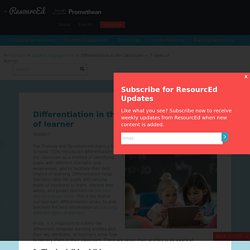
Differentiation helps teachers cater for pupils with varying levels of readiness to learn, interest and ability, and guides teachers on the best way to engage them. This is the first of our four-part differentiation series, to give teachers the best information on teaching different types of learners. Firstly, it is important to outline the differences between learning profiles and their key attributes, so teachers know how to identify them in their classroom. There are seven main profiles to be aware of. 1. Differentiation in the classroom — engaging different learning profiles. Differentiation in the classroom is an important skill for teachers to give pupils the best chance at learning, regardless of their abilities, strengths and weaknesses.

In our first post, we identified the seven learning profiles teachers should recognise in the classroom, and in the second, we discussed the difference between the learning conditions of readiness, ability and interest. Now these conditions can be applied to the principal learning profiles, teachers should consider how to best inspire these pupils.
Student engagement is key to fostering motivation and confidence in the classroom. 1. Formative assessment. This academic year has heralded a profound change in my approach to assessment.
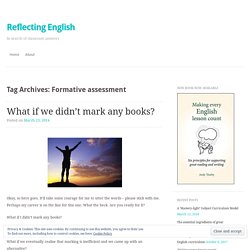
I now mark with feedback strategies in mind. The Secret of Effective Feedback. Week 4 microteaching 1 effective feedback. "How Am I Doing?" SEF2013. How Can Educators Design Authentic Performance Tasks? (Part 3) Jay McTighe is an accomplished author, having co-authored 14 books, including the award-winning and best-selling Understanding by Design series with Grant Wiggins.
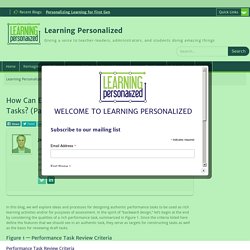
His books have been translated into ten languages. Jay has also written more than 35 articles and book chapters, and been published in leading journals, including Educational Leadership (ASCD) and Education Week. Lessons From The Middle. I am so excited about my Spectacular Spring Giveaway – hopefully, the first giveaway of many from Lessons From The Middle.
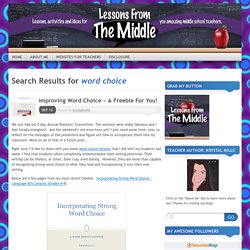
Kaboom! Possibly The Best Center Game Ever! - Teaching with Jillian Starr. Free Downloads for Canadian Teachers. 7 Board Games to Learn English and Play Your Way to Fluency. Board games aren’t just for fun. When you think of studying English, what do you imagine? You probably see yourself sitting at a desk with your nose in a book. Reading an English book can be fun sometimes. But studying English doesn’t always have to be that way. Studying can be a social and fun activity. Gather your friends, grab some board games and you will be learning in no time. Some board games are created to be educational and teach the players.
Valentine's Day resources and lesson plans. MediaLit Moments Activities: Fake News. Viewer. Images and Bloom’s Taxonomy. LearnAlberta.ca. Best Practices: The Gallery Walk — Mud and Ink Teaching. Gallery Walk - SALTISE. Digitalizing Gallery Walks: A Method for Student-Centered Feedback and Engagement - Teaching Online Pedagogical Repository. Tags: Assessment, Collaborative Learning, Connectivism, Gallery Walk, Instructor Presence, Interaction, Learning Presence, Social Presence Description Traditional gallery walks let students stroll through the classroom viewing their peers’ work, which is often set up on the top of their desks.

At its heart, a gallery walk is an interactive, discussion technique where students move around the room, actively analyze information, and provide peers with feedback about their work (Fasse & Kolodner, 2000; Francek, 2006; Gooding & Metz, 2011). Bring the World to Your Classroom. When I saw Bring the World to Your Classroom by Kelly Kermode and Kim Randall mentioned on my Twitter feed I knew I had to order it.
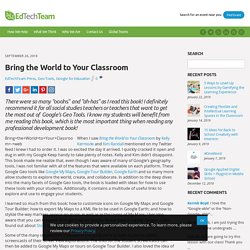
I was so excited the day it arrived. Gallery Walk. Gmail: espacio de almacenamiento y correo gratuitos de Google. The Wrong Way to Teach Grammar. These students are victims of the mistaken belief that grammar lessons must come before writing, rather than grammar being something that is best learned through writing.
I saw the high cost of this phenomenon first-hand at the urban community college where I taught writing for eight years, an institution where more than 90 percent of students failed to complete a two-year degree within three years. (The national average is only marginally better at roughly 80 percent.) A primary culprit: the required developmental writing classes that focused on traditional grammar instruction. Again and again, I witnessed aspiration gave way to discouragement. In this seven-college system, some 80 percent of the students test into such classes where they can spend up to a year before being asked to write more than a paragraph. 05 Writers Workshop v001 (Full) What Is Writing Workshop and How Do I Use It in the Classroom? If you’re new to teaching writing, you may have heard discussion about writing workshop but not be entirely sure about what it is or how to use it in your classroom.
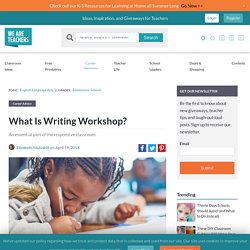
WeAreTeachers is here with the answer. What is writing workshop? Writing workshop is a student-centered framework for teaching writing that is based on the idea that students learn to write best when they write frequently, for extended periods of time, on topics of their own choosing. Minilessons: Writing Workshop Fundamentals. A few years ago, Beth Moore helped me realize we can teach our own children how to master skills by using the minilesson architecture.
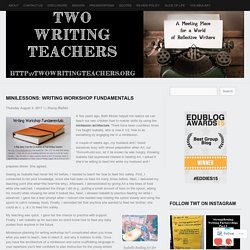
National Parks Research Webquest. Grade 10 Poetry Anthology by Chathun Kurera on Prezi. National Parks Research Webquest. Constructivism as a Paradigm for Teaching and Learning.